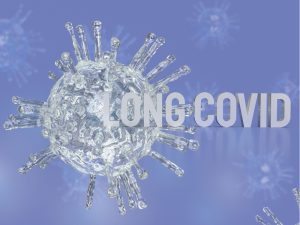
By Reine DuBois, Clinical Director, The Health Lodge
At The Health Lodge, we’ve worked with many individuals navigating the complex journey of Long COVID recovery. One of the most promising therapies we’ve used in our integrative clinical model is Low-Dose Naltrexone (LDN)—particularly when combined with foundational principles of healing like personalised nutrition, lifestyle adjustments and nervous system support,. Now, we’re thrilled to see emerging research catching up with what many integrative clinicians have observed for years: LDN is having a real, measurable impact—and now we know how.
New Study: LDN Restores TRPM3 Ion Channel Function in Long COVID
A groundbreaking study led by immunologist Professor Pete Smith has shown that Low-Dose Naltrexone (LDN) can restore the function of TRPM3 ion channels in Natural Killer (NK) cells from Long COVID patients. These ion channels are crucial for cellular calcium signaling, which affects everything from immune response to energy regulation and pain sensitivity.
What’s the Problem with TRPM3 in Long COVID?
In people suffering from Long COVID, the TRPM3 ion channels—key calcium channels located in immune cells like NK cells—become dysfunctional. This means:
- Reduced calcium (Ca²⁺) influx, impairing cellular activity.
- Poor immune signaling, especially in NK cells (which are critical for viral defense).
- A complete loss of sensitivity to certain regulatory molecules (like the TRPM3 antagonist ononetin), suggesting a deeply impaired system.
These changes may contribute to the persistent fatigue, immune dysfunction, and neurological symptoms that many Long COVID patients experience.
How Does Low-Dose Naltrexone Help?
The study found that LDN (3–4.5 mg daily for ~ an average of 7.2 months) restored TRPM3 ion channel function in NK cells of Long COVID patients to levels that were indistinguishable from healthy controls.
Key findings:
- Calcium signaling normalised: TRPM3 channels in LDN-treated patients responded well to activation by pregnenolone sulfate (PregS).
- Sensitivity returned: NK cells once again responded to ononetin inhibition—just like in healthy individuals.
- Ion channel function was fully restored, suggesting a significant immune regulation reset.
What’s the Mechanism?
LDN is a mu-opioid receptor antagonist, which means it blocks opioid receptors involved in immune and neurological modulation. These receptors, when overstimulated (as often seen in chronic illness), can suppress TRPM3 channels through a protein pathway involving Gβγ subunits.
By blocking this suppression, LDN frees the TRPM3 channels to function properly—restoring normal calcium signaling, immune function, and likely improving fatigue and pain responses.
LDN also:
- Reduces inflammation via Toll-like receptor 4 (TLR4) inhibition
- Modulates immune activity
- Supports endogenous endorphin production, which regulates pain and mood
Clinical Validation of What We See at The Health Lodge
For years, we’ve seen LDN benefit patients with Long COVID, ME/CFS, autoimmune conditions, and chronic inflammation—especially when integrated with diet, detox, stress support, and foundational lifestyle care. Now, we finally have robust clinical evidence to support what we’ve long observed.
This research highlights the value of blending integrative care with targeted pharmacological tools like LDN to support healing on a cellular level.
Where to Next? The Future of LDN Research
While this is a powerful step forward, more research is still needed. Areas for future investigation include:
- Randomized clinical trials to validate LDN’s impact on fatigue, brain fog, and immune markers in larger Long COVID cohorts
- TRPM3 function in other tissues, not just immune cells—especially nervous system and endocrine tissues
- Exploration of other ion channels (like TRPM2, TRPM7, TRPV1), which are also implicated in conditions overlapping with Long COVID, such as ME/CFS
Final Thoughts
This new research is a major step in validating the integrative approach we use every day at The Health Lodge. It supports the growing recognition that chronic post-viral syndromes like Long COVID demand a systems-level, multi-disciplinary treatment model—and that restoring immune function at the cellular level is possible.
Sasso et al. (2025). Low-Dose naltrexone restored TRPM3 ion channel function in natural killer cells from long COVID patients
https://www.frontiersin.org/journals/molecular-biosciences/articles/10.3389/fmolb.2025.1582967/full



